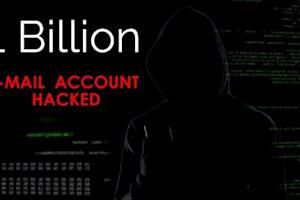Le maintien de la conformité informatique est plus essentiel que jamais à l’ère numérique d’aujourd’hui. Alors que les entreprises s’appuient de plus en plus sur la technologie pour gérer les données sensibles, il est essentiel de se conformer aux normes et réglementations sectorielles pour protéger les informations, éviter de coûteuses sanctions et maintenir la confiance avec les clients et les parties prenantes.
Cependant, il peut être difficile de naviguer dans le paysage complexe de la conformité informatique, en raison de diverses normes et de différents risques auxquels les entreprises doivent faire face. Ce guide explore ce qu’implique la conformité informatique, pourquoi elle est importante et comment les organisations peuvent gérer efficacement leurs efforts de conformité pour garantir un environnement informatique sûr et juridiquement solide.
Qu’est-ce que la conformité informatique ?
Définition de la conformité informatique
La conformité informatique est le processus qui consiste à adhérer à des lois, réglementations et normes spécifiques qui régissent la gestion, la sécurisation et l’utilisation des technologies de l’information au sein d’une organisation. Ces exigences de conformité visent à garantir que les entreprises protègent les données sensibles, garantissent la sécurité et opèrent dans le respect des cadres légaux.
Pourquoi la conformité informatique est-elle importante ?
La conformité informatique joue un rôle crucial dans la protection des données sensibles, l’évitement des sanctions juridiques et le maintien de la confiance avec les clients et les parties prenantes. En s’assurant que les systèmes informatiques d’une entreprise répondent aux normes réglementaires nécessaires, les organisations peuvent prévenir les fuites de données, protéger les informations des clients et éviter les pénalités coûteuses qui peuvent découler d’une non-conformité. De plus, le maintien de la conformité informatique permet de se forger une réputation de fiabilité et de sécurité, ce qui est essentiel pour le succès à long terme de l’entreprise.
Qui a besoin de la conformité informatique ?
Toutes les organisations, quelle que soit leur taille ou leur secteur d’activité, doivent répondre aux exigences de conformité informatique spécifiques à leur secteur. Cela inclut les entreprises privées, les agences gouvernementales, les prestataires de soins de santé, les institutions financières, etc. Chaque secteur d’activité peut avoir des réglementations uniques, telles que le RGPD pour la confidentialité des données dans l’UE ou l’HIPAA pour les soins de santé aux États-Unis, ce qui rend essentiel pour les entreprises de comprendre et de mettre en œuvre les mesures de conformité nécessaires pour protéger leurs opérations et leurs données.
Conformité vs sécurité informatique
Bien que la conformité et la sécurité informatique soient étroitement liées, elles servent des objectifs différents. La sécurité informatique se concentre sur la protection des systèmes, des réseaux et des données contre les accès non autorisés et les menaces, souvent par la mise en œuvre de mesures de protection techniques telles que des pare-feu, le chiffrement et les contrôles d’accès.
De son côté, la conformité informatique garantit que ces mesures de sécurité répondent à des normes légales et réglementaires spécifiques. En d’autres termes, la sécurité informatique consiste à protéger les actifs, tandis que la conformité informatique consiste à s’assurer que les stratégies de protection sont conformes à la loi. Les deux sont essentiels, mais la conformité informatique ajoute une couche supplémentaire d’assurance que les pratiques de sécurité en place sont juridiquement solides et efficaces.
Principales normes et réglementations de conformité informatique
Dans un paysage numérique en constante évolution, les entreprises doivent se conformer à diverses normes et réglementations de conformité informatique pour garantir la sécurité et la confidentialité des données. Ces réglementations varient selon le secteur d’activité, la localisation et le type de données traitées. Vous trouverez ci-dessous quelques-unes des normes de conformité informatique les plus critiques que les organisations doivent connaître :
1. RGPD (Règlement général sur la protection des données)
Le RGPD est un règlement complet sur la protection des données mis en œuvre par l’Union européenne (UE) qui régit la manière dont les organisations collectent, traitent et stockent les données personnelles des citoyens de l’UE. Elle s’applique à toute entreprise qui traite des données de citoyens de l’UE, quel que soit le lieu où elle est située. La conformité au RGPD est cruciale pour éviter de lourdes pénalités et garantir que les données personnelles sont traitées avec le plus grand soin et la plus grande transparence.
2. HIPAA (Loi sur la portabilité et la responsabilité en matière d’assurance maladie)
L’HIPAA est une réglementation américaine qui définit la norme en matière de protection des données sensibles des patients. Toute organisation qui traite des informations de santé protégées (PHI) doit s’assurer que toutes les mesures de sécurité physiques, de réseau et de processus nécessaires sont en place et respectées. Ce règlement s’applique aux prestataires de soins de santé, aux assureurs et à toute autre entité qui traite ou stocke les données PHI. Le non-respect peut entraîner de lourdes sanctions, ce qui rend le respect de la HIPAA essentiel pour les établissements de santé.
3. SOC 2 (Contrôles des systèmes et de l’organisation 2)
SOC 2 est un ensemble de normes développées par l’American Institute of CPAs (AICPA) pour gérer les données des clients sur la base de cinq « principes de service de confiance » : sécurité, disponibilité, intégrité du traitement, confidentialité et respect de la vie privée. La conformité SOC 2 est essentielle pour les fournisseurs de services qui stockent les données des clients dans le cloud, car elle garantit que les pratiques de sécurité de l’information d’une organisation sont solides et efficaces. Les rapports SOC 2 fournissent aux clients l’assurance que leurs données sont gérées en toute sécurité.
4. PCI DSS (norme de sécurité des données du secteur des cartes de paiement)
La norme PCI DSS est un ensemble de normes de sécurité conçues pour garantir que toutes les entreprises qui acceptent, traitent, stockent ou transmettent des informations de carte bancaire maintiennent un environnement sécurisé. La conformité à la norme PCI DSS est obligatoire pour toutes les organisations qui gèrent les paiements par carte, et le non-respect de cette norme peut entraîner de lourdes pénalités et une perte de confiance des clients. La norme inclut des exigences en matière d’architecture réseau sécurisée, de chiffrement, de contrôle d’accès, ainsi que de surveillance et de tests réguliers.
5. ISO/IEC 27001 (Organisation internationale de normalisation/Commission électrotechnique internationale 27001)
La norme ISO/IEC 27001 est une norme internationale qui spécifie les exigences relatives à la mise en place, à la mise à jour et à l’amélioration continue d’un système de gestion de la sécurité de l’information (ISMS). Cette norme aide les organisations de toutes tailles et de tous secteurs à protéger leurs actifs informatiques de manière systématique et économique. La certification ISO/IEC 27001 démontre qu’une entreprise a une approche solide de la gestion des informations sensibles de l’entreprise et des clients.
6. CCPA (Loi sur la protection des consommateurs de Californie)
Le CCPA est une loi sur la confidentialité des données applicable à l’ensemble de l’État qui réglemente la manière dont les entreprises du monde entier sont autorisées à gérer les informations personnelles des résidents de Californie. Cela permet aux consommateurs californiens de mieux contrôler leurs données personnelles et oblige les entreprises à faire preuve de transparence quant à leurs pratiques en matière de données. Le non-respect du CCPA peut entraîner de lourdes sanctions et porter atteinte à la réputation de l’organisation.
7. NIST (Institut national des normes et technologies)
Le cadre de cybersécurité du NIST fournit un ensemble de meilleures pratiques et de directives pour aider les organisations à identifier, protéger, détecter, répondre et se remettre des menaces cybernétiques. Bien qu'il ne soit pas obligatoire pour toutes les entreprises, il est largement adopté dans les industries et sert souvent de base pour atteindre d'autres normes de conformité comme HIPAA, FISMA et CMMC.
Chacune de ces normes et réglementations joue un rôle essentiel dans la protection des données sensibles et dans la garantie que les entreprises opèrent dans le cadre légal de leurs secteurs d’activité respectifs. La conformité ne consiste pas simplement à éviter les sanctions ; il s’agit de renforcer la confiance des clients et des parties prenantes en démontrant leur engagement en faveur de la sécurité et de la confidentialité.
Principaux risques associés à la gestion de la conformité informatique
La gestion de la conformité informatique est une tâche complexe qui implique de naviguer dans une variété de réglementations et de normes, chacune avec son propre ensemble d’exigences. L’incapacité à gérer efficacement la conformité informatique peut exposer les organisations à des risques importants, qui peuvent avoir de graves conséquences financières, juridiques et de réputation. Voici quelques-uns des principaux risques associés à la gestion de la conformité informatique :
1. Pénalités et sanctions pour non-conformité
L’un des risques les plus immédiats d’une mauvaise gestion de la conformité informatique est le risque de non-conformité aux exigences réglementaires. De nombreuses réglementations, telles que le RGPD ou l’HIPAA, imposent de lourdes amendes en cas de non-conformité. Ces pénalités peuvent aller de milliers à des millions de dollars, selon la gravité de l’infraction. Au-delà de la perte financière, les pénalités peuvent également nuire à la réputation d’une entreprise et entraîner une perte de confiance des clients.
2. Fuites de données et menaces de cybersécurité
La non-conformité aux normes informatiques est souvent corrélée à des pratiques de sécurité faibles, ce qui augmente la probabilité de fuites de données. Lorsque les organisations ne respectent pas les exigences de conformité, elles peuvent ne pas mettre en œuvre les mesures de sécurité nécessaires, exposant ainsi les données sensibles aux cyberattaques. Une fuite de données peut entraîner d’importantes pertes financières, une mise en cause de la responsabilité juridique et une atteinte irrémédiable à la réputation d’une organisation.
3. Actions légales et réglementaires
Le non-respect de la réglementation informatique peut entraîner des actions en justice, notamment des poursuites judiciaires et des enquêtes gouvernementales. Les procédures judiciaires peuvent être coûteuses et prendre beaucoup de temps, et la publicité négative qui en résulte peut encore nuire à la position d’une organisation sur le marché. De plus, les mesures réglementaires peuvent inclure des audits ou des inspections obligatoires, ce qui alourdit la pression opérationnelle de l’entreprise.
4. Perturbations opérationnelles
La gestion de la conformité nécessite souvent l’intégration de processus et de technologies spécifiques dans les opérations quotidiennes. Le fait de ne pas gérer correctement ces exigences peut entraîner des perturbations opérationnelles, telles que des arrêts du système ou des retards dans la prestation des services. Ces perturbations peuvent affecter la continuité métier, ce qui conduit à des pertes financières et à des clients mécontents.
5. Perte de la confiance des clients et atteinte à la réputation de la marque
La confiance est un élément essentiel des relations avec les clients, en particulier lorsqu’il s’agit de données sensibles. La non-conformité ou la violation des normes de conformité peut éroder la confiance des clients, ce qui se traduit par des pertes d’opportunités commerciales et une réputation ternie. Rétablir la confiance après un manquement à la conformité est un défi et nécessite souvent un investissement important en temps et en ressources.
6. Complexité et coût accrus de la gestion de la conformité
À mesure que les réglementations évoluent, le maintien de la conformité devient de plus en plus complexe. Les organisations peuvent rencontrer des difficultés à se conformer aux nouvelles exigences, ce qui entraîne des pratiques de conformité obsolètes ou incomplètes. Cela peut générer une hausse des coûts car les entreprises investissent dans des technologies de pointe, des formations et des audits externes pour rétablir la conformité. Plus une organisation reste en situation de non-conformité, plus il coûte cher d’y remédier.
Bonnes pratiques pour une gestion efficace de la conformité informatique
Assurer la conformité informatique est un processus continu qui nécessite de la diligence, de la stratégie et une approche proactive. Pour gérer efficacement la conformité informatique, les entreprises doivent mettre en œuvre les bonnes pratiques qui répondent aux exigences réglementaires et améliorent la sécurité globale et l’efficacité opérationnelle. Voici quelques bonnes pratiques clés pour gérer efficacement la conformité informatique :
1. Mener des audits de conformité réguliers
Des audits de conformité réguliers sont essentiels pour identifier les lacunes de votre programme de conformité informatique et s’assurer que votre organisation respecte toutes les réglementations pertinentes. Ces audits doivent être exhaustifs et couvrir tous les aspects de votre infrastructure, de vos politiques et de vos procédures informatiques. En réalisant des audits réguliers, vous pouvez traiter de manière proactive tout enjeu de conformité avant qu’il ne se traduise par des problèmes plus importants, tels que des sanctions financières ou des failles de sécurité.
2. Mettre en œuvre des mesures de sécurité robustes
La sécurité et la conformité sont intrinsèquement liées. Pour répondre aux exigences de conformité informatique, les entreprises doivent mettre en œuvre des mesures de sécurité robustes qui protègent les données et les systèmes sensibles. Cela inclut le chiffrement, l’authentification multifacteur (MFA), les contrôles d’accès et les mises à jour logicielles régulières. En sécurisant votre environnement informatique, vous vous conformez non seulement aux réglementations, mais vous protégez également votre organisation contre les cybermenaces.
3. Fournir une formation continue aux employés
Les employés jouent un rôle crucial dans le maintien de la conformité informatique. Des sessions de formation régulières devraient être organisées pour s’assurer que tous les membres du personnel comprennent l’importance de la conformité et connaissent les réglementations spécifiques qui s’appliquent à leurs fonctions. La formation devrait couvrir des sujets tels que la protection des données, la sensibilisation au phishing et le traitement approprié des informations sensibles. Des employés bien informés sont moins susceptibles de commettre des erreurs qui pourraient mener à des manquements à la conformité.
4. Rester au courant des modifications réglementaires
Les exigences réglementaires évoluent constamment, et il est essentiel de se tenir au courant de ces changements pour rester en conformité. Les organisations doivent suivre les organismes de réglementation concernés et l’actualité du secteur pour les mises à jour et s’assurer que leurs politiques de conformité sont ajustées en conséquence. Cette approche proactive permet d’éviter tout manquement à la conformité dû à des pratiques dépassées ou à une méconnaissance des nouvelles exigences.
5. Utiliser des outils de gestion de la conformité
L’utilisation d’outils de gestion de la conformité peut rationaliser le processus de maintien de la conformité informatique. Ces outils peuvent aider à automatiser des tâches telles que les pistes d’audit, les rapports et l’application des politiques, afin de réduire le risque d’erreur humaine et de garantir la cohérence au sein de l’organisation. En outre, les logiciels de gestion de la conformité peuvent fournir des informations en temps réel sur votre statut de conformité, ce qui facilite la résolution rapide des problèmes.
6. Élaborer une politique de conformité complète
Une politique bien documentée est la base d’une gestion efficace de la conformité informatique. Celle-ci doit décrire les réglementations spécifiques auxquelles votre organisation doit se conformer, les étapes nécessaires pour maintenir la conformité, ainsi que les rôles et les responsabilités des employés dans le processus. Une politique claire et complète permet à tous les membres de l’organisation de comprendre leur rôle dans le maintien de la conformité et contribue à créer une culture de responsabilisation.
En suivant ces bonnes pratiques, les organisations peuvent gérer efficacement la conformité informatique, minimiser les risques et s’assurer qu’elles répondent à toutes les exigences réglementaires pertinentes.
Éléments essentiels d’une liste de contrôle de conformité informatique
Une liste de contrôle de conformité informatique bien structurée aide les entreprises à respecter les exigences réglementaires, à protéger les données sensibles et à éviter les risques de sécurité. Les éléments clés sont les suivants :
Politiques de sécurité des données : établissez des directives pour le chiffrement des données, les contrôles d’accès et le stockage sécurisé afin d’empêcher tout accès non autorisé.
Gestion de l’accès des utilisateurs : implémentez des contrôles d’accès basés sur les rôles (RBAC) et une authentification multifactorielle (MFA) pour limiter les informations sensibles aux utilisateurs autorisés.
Audits et surveillance réguliers : réalisez des évaluations de sécurité régulièrement pour identifier les vulnérabilités et garantir la conformité avec les réglementations sectorielles.
Plan de réponse aux incidents : élaborez un protocole clair pour répondre aux failles de sécurité, y compris des mesures de détection, de confinement et d’atténuation des menaces.
Normes de conformité réglementaire : assurez le respect des cadres tels que RGPD, HIPAA, SOC 2 et ISO 27001 en fonction des exigences du secteur.
Accès à distance sécurisé : utilisez une solution de bureau à distance professionnelle comme Splashtop pour appliquer les connexions chiffrées et la sécurité des terminaux.
Le respect de ces bonnes pratiques en matière de conformité permet aux entreprises de réduire les risques, de préserver la conformité aux réglementations et de protéger les infrastructures informatiques essentielles.
Solutions de télétravail Splashtop : conformité garantie, accès à distance simplifié
Dans le paysage numérique d’aujourd’hui, il peut être difficile d’assurer la conformité informatique tout en permettant l’accès à distance . Les solutions Splashtop sont conçues pour simplifier ce processus en fournissant des capacités d’accès à distance sécurisées, fiables et conformes. Que vous gériez une petite entreprise ou une grande société, Splashtop offre des fonctionnalités qui permettent de répondre à des exigences de conformité strictes tout en conservant la flexibilité nécessaire aux environnements de télétravail modernes.
Fonctions de sécurité contribuant à la conformité informatique
Les mesures de sécurité robustes de Splashtop sont conçues pour s’aligner sur les normes les plus élevées du secteur, garantissant que votre organisation reste conforme aux réglementations telles que le RGPD, l’HIPAA et SOC 2. Les principales caractéristiques de sécurité comprennent :
Chiffrement de bout en bout : toutes les sessions à distance sont protégées par un chiffrement AES 256 bits, qui protège les données sensibles lorsqu’elles circulent sur les réseaux.
Contrôles d’accès granulaires : gérez l’accès à vos systèmes à l’aide d’autorisations basées sur les rôles, en veillant à ce que seul le personnel autorisé puisse accéder aux données et aux systèmes critiques.
Journaux d’audit complets : Splashtop fournit une journalisation détaillée de toutes les sessions à distance, ce qui vous permet de maintenir une piste d’audit complète pour les rapports de conformité et les enquêtes.
Authentification multifactorielle (MFA) : renforcez la sécurité grâce à la MFA, qui ajoute une couche de protection supplémentaire en exigeant plusieurs formes de vérification avant d’accorder l’accès.
Commencez votre essai gratuit dès aujourd'hui
Avec Splashtop, vous pouvez vous assurer que votre organisation répond à toutes les exigences réglementaires nécessaires tout en offrant à votre équipe un accès à distance optimal et sécurisé. Découvrez un environnement de télétravail conforme, sécurisé et efficace en commençant dès aujourd’hui votre essai gratuit de Splashtop.





